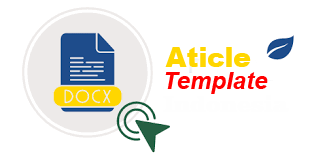Prediksi Risiko Kesehatan Mental Mahasiswa Menggunakan Klasifikasi Naive Bayes
DOI:
https://doi.org/10.30865/jurikom.v12i3.8648Keywords:
Mental health, Classification, Naïve Bayes, Risk prediction, Probabilistic analysisAbstract
The mental health of university students is a growing concern as academic, emotional, and social pressures contribute to increased psychological risks. This study aims to classify mental health risk levels Low, Medium, and High among students using the Naïve Bayes classification algorithm. A dataset consisting of 1,000 entries and 11 key variables was utilized, covering academic, psychological, and behavioral factors. The preprocessing stage included data cleaning, label encoding, normalization, and rule-based labeling to determine the target classes. Model training and testing were conducted using stratified data splitting to preserve class distribution. The initial model achieved a classification accuracy of 88,67%, with macro average F1-score of 0.87 and weighted average F1-score of 0.88. Grid Search optimization with k-fold cross-validation was applied but showed no significant improvement, indicating the model was already in optimal configuration. Furthermore, probabilistic analysis revealed that Sleep Quality and Study Stress Level were the most influential features in predicting mental health risks. The findings suggest that Naïve Bayes is effective for multi-class classification with interpretable results. This research contributes to early detection efforts and offers a foundation for targeted interventions in university mental health management.
References
Wisnugraha, I. N. Farida, and ..., “Implementasi Algoritma Naïve Bayes Dalam Menentukan Diagnosa Tingkat Depresi Mahasiswa Akhir Terhadap Pengerjaan Skripsi,” Pros. SEMNAS …, vol. 7, pp. 919–928, 2023, [Online]. Available: https://proceeding.unpkediri.ac.id/index.php/inotek/article/view/3517%0Ahttps://proceeding.unpkediri.ac.id/index.php/inotek/article/download/3517/2321.
R. Alfarezy, E. Ermatita, and R. M. B. Wadu, “Implementasi Algoritma Naïve Bayes Untuk Analisis Klasifikasi Survei Kesehatan Mental (Studi Kasus: Open Sourcing Mental Illness),” Inform. J. Ilmu Komput., vol. 19, no. 1, pp. 1–10, 2023, doi: 10.52958/iftk.v19i1.4696.
M. F. Eina, Y. H. Chrisnanto, and M. Melina, “Klasifikasi Telemarketing Menggunakan Naïve Bayes Classification Dan Wrapper Sequential Feature Selection,” INTECOMS J. Inf. Technol. Comput. Sci., vol. 7, no. 4, pp. 1189–1198, 2024, doi: 10.31539/intecoms.v7i4.10846.
Q. A’yuniyah et al., “Implementasi Algoritma Naïve Bayes Classifier (NBC) untuk Klasifikasi Penyakit Ginjal Kronik,” J. Sist. Komput. dan Inform., vol. 4, no. 1, p. 72, 2022, doi: 10.30865/json.v4i1.4781.
N. Mahfudza and M. Ikhsan, “Sentiment Analysis of Youtube Comments on Indonesian Presidential Candidates in 2024 using N a?ve Bayes Classifier Method,” J. Ris. Komput., vol. 12, no. 2, pp. 140–148, 2025, doi: 10.30865/jurikom.v12i2.8538.
T. Yan, S. L. Shen, A. Zhou, and X. Chen, “Prediction of geological characteristics from shield operational parameters by integrating grid search and K-fold cross validation into stacking classification algorithm,” J. Rock Mech. Geotech. Eng., vol. 14, no. 4, pp. 1292–1303, 2022, doi: 10.1016/j.jrmge.2022.03.002.
K. R. Singh, K. P. Neethu, K. Madhurekaa, A. Harita, and P. Mohan, “Parallel SVM model for forest fire prediction,” Soft Comput. Lett., vol. 3, no. June, p. 100014, 2021, doi: 10.1016/j.socl.2021.100014.
Additional Files
Published
How to Cite
Issue
Section
License
Copyright (c) 2025 Fithra Aditya Sumantri, Yulison Herry Chrisnanto, Melina

This work is licensed under a Creative Commons Attribution-ShareAlike 4.0 International License.








